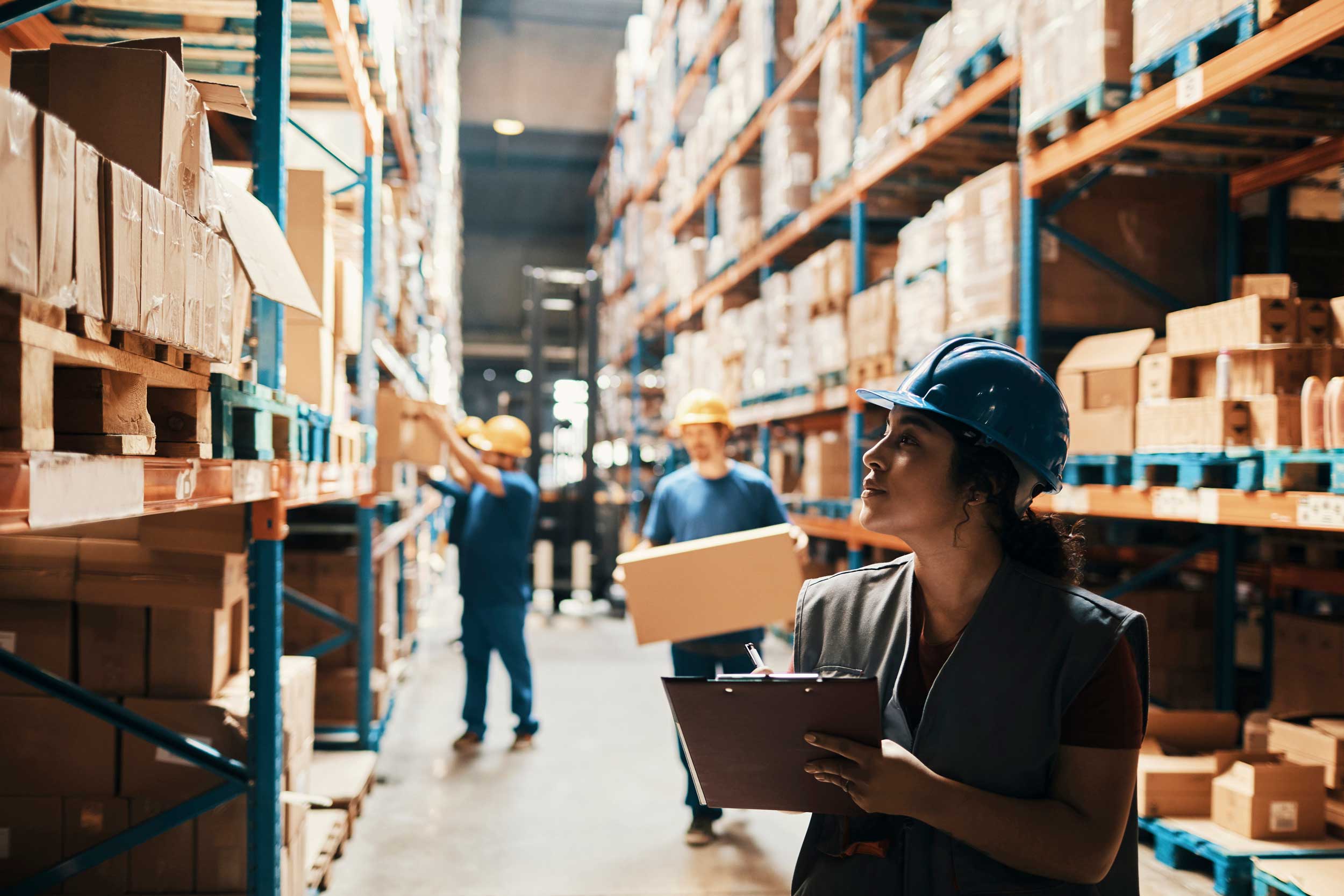Since consumption accounts for most of all economic activity, it’s little wonder that consumer demand is the chief driver of industrial commercial real estate (CRE) net absorption. Yet somehow, during all the uncertainty of the last two and a half years “industrial strength” has gotten, well, stronger. During the pandemic, retail has pushed the industrial sector to even greater heights, but with rising economic challenges, such as supply chain friction and inflation, how long will this “golden age” of industrial CRE last?
“The industrial and logistics sector has been experiencing record fundamentals over the past 24 months,” said James Breeze, CBRE’s global head of industrial and logistics research, of the record leasing activity, net absorption, rental rate, growth and development in the company’s mid-year industrial market outlook. “The industrial CRE market is not recession-proof, but the sector is somewhat insulated from an economic downturn. There are still long-term changes to consumer behavior, supply-chain strategies and sustainability governance that need to be accounted for.”
An already burgeoning e-commerce sector has juiced industrial for more than a decade now. Combined with pent-up demand by socially distant consumers who longed for a return to on-site and more personal, experiential retail offerings, the result has retail companies trying to lead the pack by balancing their “bricks and clicks.” The necessary supply chain adjustments to maximize omnichannel retail have also led industrial CRE to nearly unseen levels.
“The consumer today is flush with cash,” said Tom Bak, senior managing director at Trammell Crow Co. “They’re spending money, they’re just doing it differently. The demand is just insatiable and leading to a hybrid of mixing bricks and mortar with e-commerce. The balancing act of supplementing retail with e-commerce is really the game changer.”
Industrial CRE Trends
CoStar News noted that during the third quarter of 2022, leasing of industrial properties hit record numbers. “At least 83 million square feet of industrial leases were recorded last month, the highest ever for the month of August and up 14% from the prior-year month,” said Adrian Ponsen, U.S. director of industrial analytics for CoStar Group. “Industrial leasing isn’t showing any signs of slowing. Major retailers such as Target and Walmart have announced plans to open multiple large distribution centers across the country.”
Experts expect industrial CRE to continue being an attractive investment with demand remaining strong on the back of record-breaking fundamentals. Although the U.S. economy contracted for the second straight quarter to the point of meeting the common definition for recession, job growth, industrial production, spending and incomes all remain quite sturdy.
Unemployment has remained at a low 3.6 percent for the last two quarters with unemployment claims at a 52-year low. More employed people mean more purchasing power, which is the consumption that drives industrial demand.
“It would take a significant drop in retail sales for there to be a large decline in overall demand and right now it just doesn’t look like that’s gonna happen,” said Breeze in August 2022, adding that “we can expect double-digit industrial rent growth for the foreseeable future in North America. So that means that historically low vacancy rates are very likely here to stay despite some massive [industrial] development in the U.S. When we projected there would be annual rent growth per lease comparables of 10 percent last year in the U.S., it raised eyebrows. And today it’s 18 percent.”
Second quarter e-commerce spending registered single-digit growth for the fourth straight quarter following the 45- to 50-percent surge during the first year of the pandemic, according to the U.S. Department of Commerce’s a Digital Commerce 360 analysis. Yet, the year-over-year increase in online sales exceeded in-store volumes for the first time since early 2021.
While experts across both the retail and industrial sectors debate which economic signs, good or bad, to put the most stock in — “consumer stamina will be the big question going forward,” said National Retail Federation Chief Economist Jack Kleinhenz — industrial leaders know that location (as always), innovation and efficiency will be key determinants of success in the long run.
For example, would you believe that the high-tech warehouse of today consumes 50 times more energy compared to 20 years ago? That’s according to Kim Snyder, president, West Region, of Prologis. The company is aiming for 100 percent carbon-neutral construction globally by 2025 and is on track to reach its goal of 400 megawatts of solar capacity on its buildings that same year.
Heady Times Meet Headwinds
It seems most types of businesses are impacted by supply chain adversity, and all companies, including industrial, must deal with a very tight labor market. On the capital markets side of the industrial sector, the pandemic-accelerated push for “last mile” facilities closer to consumer bases will, no doubt, be affected by rising interest rates (in addition to the aforementioned energy needs), although developers and investors can mitigate the rising cost of capital by repositioning older, obsolete buildings.
“The report that Amazon has delayed or killed plans to open more than 60 facilities, rising interest rates and the real possibility of a recession create concerns that the continued growth of the industrial market is not sustainable generally, at least in the short-term,” said Steven Lurie, a real estate attorney at Greenberg Glusker. “Despite the headwinds, we are likely to see continued new development and rent increases in supply-constrained markets with high demand.”
Lurie reports several construction loan transactions in progress for industrial developments in Southern California’s Inland Empire, the two-county market east of Los Angeles that ranked second nationally for investor buy recommendations in PwC and Urban Land Institute’s Emerging Trends in Real Estate 2022 report.
No line of work — nor walk of life — is immune from the fear of the unknown. For now, the industrial sector will continue to have some very impressive knowns, including ranking first, according to PwC and ULI, for both investment and development prospects for nine years running.
To learn more about the latest in commercial real estate, visit KBS.com/Insights.




